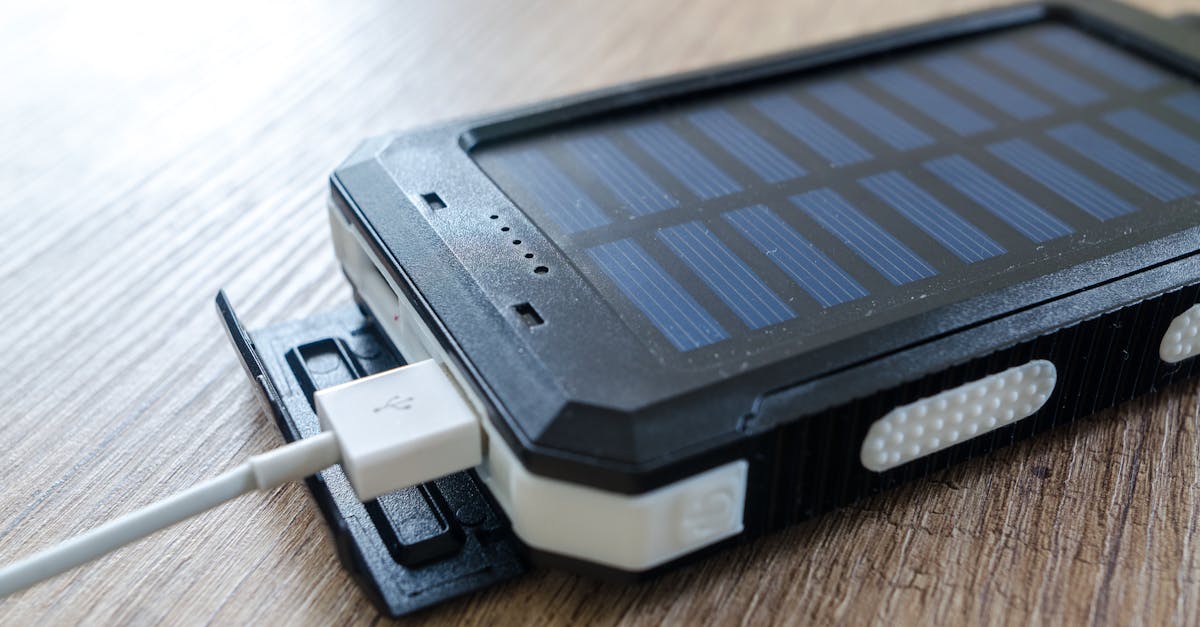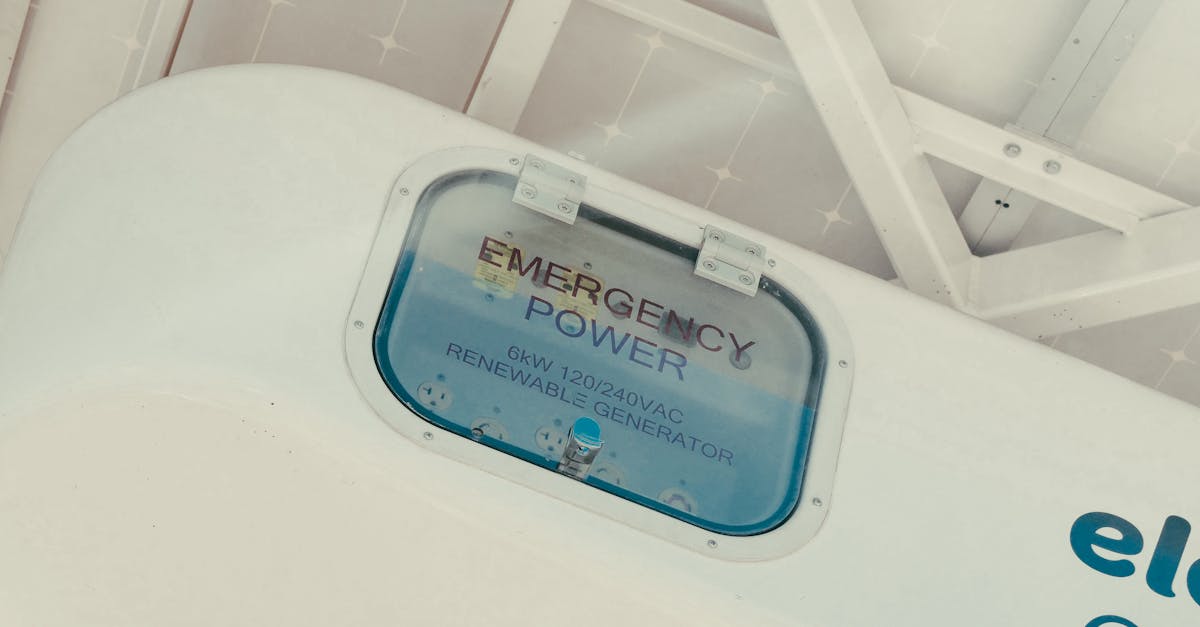
Efficiency and Performance Metrics
Efficiency and performance metrics play a crucial role in understanding how a 10 kWh battery will function in various settings. Factors such as discharge rates, cycle counts, and depth of discharge significantly affect overall battery performance. A battery’s efficiency is often measured in terms of energy loss during charge and discharge cycles. High-quality batteries tend to offer better efficiency, reducing wastage and prolonging usable energy levels.
In regions like Grassthorpe, Nottinghamshire, where solar energy systems often incorporate storage solutions, it is vital to assess these performance metrics carefully. A battery that operates efficiently can provide a reliable power source, particularly during periods when solar generation is low. Evaluating the performance of batteries in relation to local energy demands ensures that users can maximise the benefits of their solar battery storage systems.
How Efficiency Influences Battery Life
Efficiency plays a pivotal role in determining how long a 10 kWh battery will last under various usage scenarios. Factors such as energy conversion rates, discharge rates, and the overall demand placed on the battery can significantly affect its lifespan and performance. A battery’s efficiency might decrease if it operates in extreme temperatures or if it frequently cycles between charging and discharging. This not only reduces the effective capacity of the battery but can also lead to premature wear and tear, demanding careful consideration for users seeking optimal performance.
In contexts like Solar Battery storage Bingham, Nottinghamshire, users must consider local environmental conditions and energy consumption patterns. When solar power is harnessed efficiently, it can enhance the battery's longevity. Proper load management and regular system checks can help users maximise their battery life. Awareness of these efficiency-related factors ensures that users can derive the most benefit from their investment while reducing the environmental impact of their energy consumption.
Environmental Impact of Battery Use
The environmental impact of battery use is a critical consideration as the demand for renewable energy solutions grows. Batteries, particularly those that store solar energy, are pivotal in reducing reliance on fossil fuels. However, their production and disposal can lead to environmental challenges. The materials used in batteries often involve mining practices that can cause habitat destruction and pollution. Implementing better recycling processes can mitigate some of these adverse effects, making battery use more sustainable.
In areas like Tollerton, Nottinghamshire, solar battery storage systems have become increasingly popular among homeowners looking to harness renewable energy while minimising their carbon footprint. The shift towards renewable energy sources promotes a cleaner environment, yet it is essential to navigate the complexities of battery lifecycle management. Sustainable practices in the manufacturing and disposal of solar batteries are vital to ensure that the benefits of using such technology outweigh the potential environmental drawbacks.
Sustainability Considerations
The environmental sustainability of battery use hinges on several factors, including resource extraction and end-of-life management. The production of batteries often involves materials that require significant energy and may have negative impacts on ecosystems. Recycling practices for these batteries play a crucial role in reducing waste and conserving valuable materials. Implementing effective recycling solutions can ease the environmental burden and contribute to a circular economy, where materials are continuously repurposed rather than discarded.
Solar Battery storage Newark, Nottinghamshire, exemplifies a practical approach to maximising solar energy usage while minimising environmental impact. By efficiently storing excess solar energy, such systems enhance grid resilience and support grid stability. As awareness of sustainability grows, the need for cleaner energy solutions continues to highlight the importance of integrating renewable technologies, thus promoting both economic and environmental benefits for communities.
Maintenance Tips for Longevity
Regular maintenance is essential for maximising the lifespan of a 10 kWh battery. Keeping the battery clean and free from dust can significantly enhance its efficiency. Periodically check for any signs of wear or damage, especially at the terminals. Proper ventilation is crucial to prevent overheating, which can adversely affect performance. Additionally, scheduling routine inspections by professionals can help identify potential issues before they escalate.
In areas like Newark, Nottinghamshire, where solar battery storage systems are increasingly popular, adhering to best practices is particularly important. Avoiding deep discharges and ensuring the battery remains within the recommended temperature range can greatly contribute to its longevity. Utilising monitoring software can also provide valuable insights into battery health, allowing for timely interventions if needed. By following these tips, users can ensure their investment remains functional and efficient for years to come.
Best Practices to Extend Battery Life
To ensure the longevity of a 10 kWh battery, proper maintenance practices are essential. Regular monitoring of the battery's state of charge helps prevent deep discharges, which can significantly reduce its lifespan. Keeping the battery at a moderate temperature also plays a vital role; ideally, it should be stored in an environment where the temperature remains stable, avoiding extremes. For those utilising systems like solar battery storage in Tollerton, Nottinghamshire, installing temperature regulation options can make a substantial difference.
Additionally, employing smart charging routines can protect battery health. Charging the battery during off-peak hours when demand is lower can save energy and improve efficiency. For solar battery storage in Tollerton, Nottinghamshire, this means aligning the charging schedule with peak solar production times. Regular cleaning of battery terminals and connections also prevents corrosion, which can hinder performance. By following these best practices, users can maximise both the functionality and durability of their battery systems.
FAQS
What factors determine how long a 10 kWh battery will last?
The duration a 10 kWh battery will last depends on several factors, including the rate of energy consumption, the efficiency of the battery system, and the specific appliances or devices being powered.
Can I extend the lifespan of a 10 kWh battery?
Yes, you can extend the lifespan of a 10 kWh battery by following best practices such as regular maintenance, avoiding complete discharges, and optimising charging cycles.
How does temperature affect the performance of a 10 kWh battery?
Temperature can significantly impact battery performance; extreme heat can accelerate degradation, while extreme cold can reduce capacity. It's best to keep batteries in a controlled environment.
Are there any sustainability considerations when using a 10 kWh battery?
Yes, sustainability considerations include the environmental impact of battery manufacturing, the sourcing of materials, and the recyclability of used batteries, which are crucial for reducing overall environmental harm.
What are the best practices for maintaining a 10 kWh battery?
Best practices include regular inspection for wear and damage, keeping terminals clean, ensuring proper ventilation, and adhering to the manufacturer's guidelines for charging and usage.


